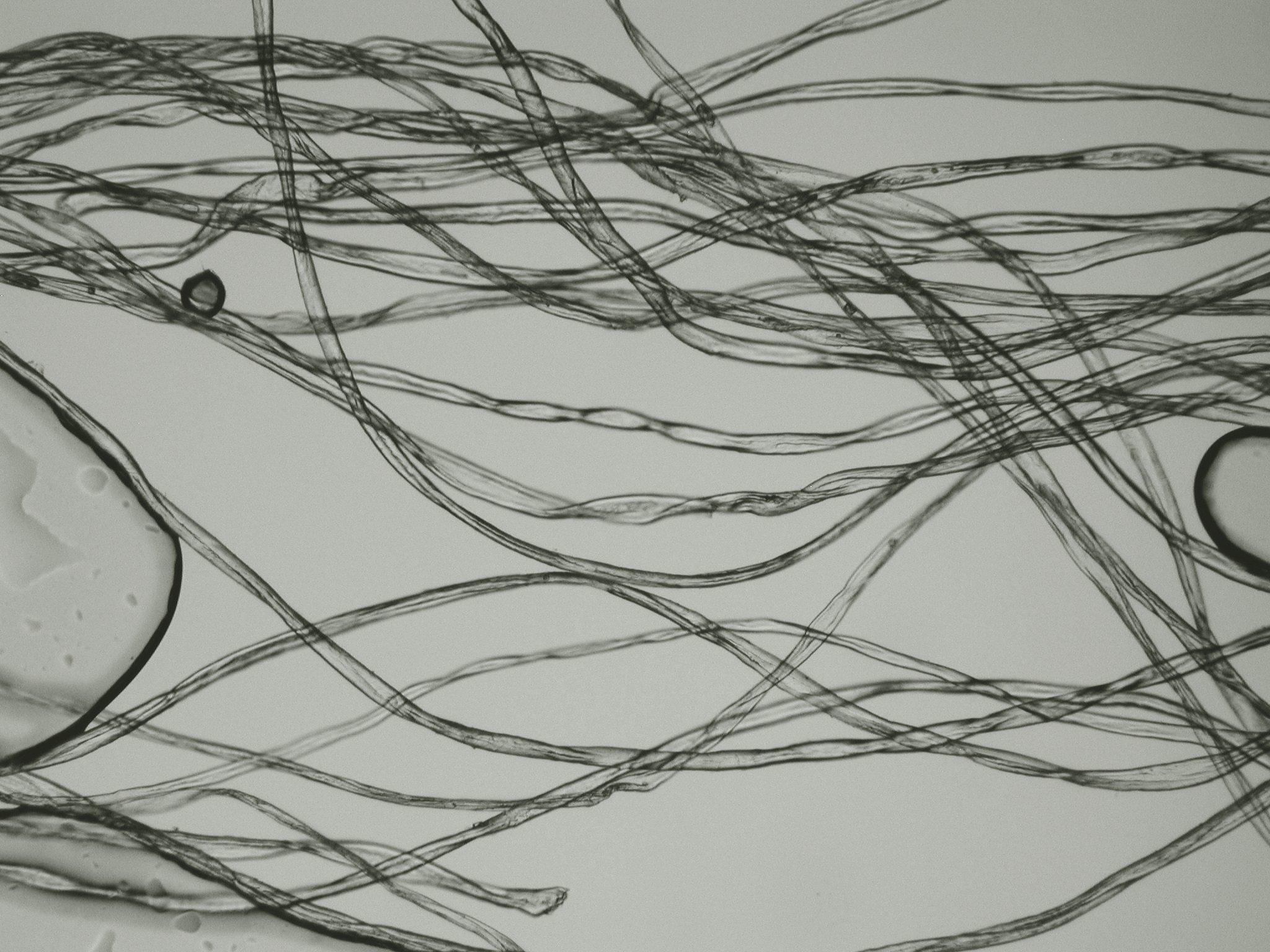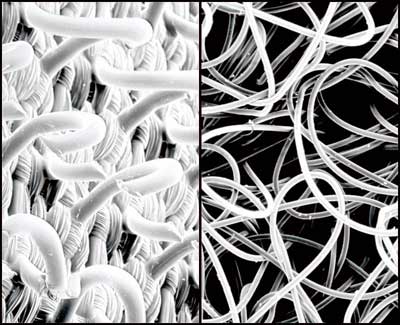History Of Hair and Fiber Analysis
 Hair and Fiber Analysis began at the start of the 1900s. Academically, it was not viewed as a firm basis for science, but publications by John Glaister and John Hick helped confirm the validity of using hair and fibers as a basis for conviction. The very first case utilizing hairs and fibers was that of Wayne Williams. Young African American male bodies had been found from 1979 to 1981 in Atlanta, Georgia, and it was clear that a serial killer was on the loose. The only other thing the bodies had in common were the presence of some type of fiber, and what was determined to be dog hair. The Georgia State Crime Laboratory tested the fibers and found that there were two types: a violet colored fiber and a yellow green fiber, which was determined to be from a carpet. Unfortunately, the manufacturer was not found. This discovery was published in the newspaper, and bodies were then found unclothed. The majority of the bodies were found in the Chatahoochee river, so police monitored the area. On May 22, 1981, a loud splash was heard, signifying that something had just been thrown over the bridge. The stopped someone in a station wagon named Wayne Williams. After questions, Williams claimed that he had just thrown trash into the river, and he was released. Two days later, the police found the body of Nathaniel Cater in the river, which was the object that had been thrown over the bridge. A single yellow-green fiber was found in his hair. The medical examiner claimed that the man had been dead for two days. The police searched Wayne William's home and car, finding the floor covered in yellow-green carpeting and a dog in the house. Williams was questioned, and three tests from the polygraph showed that he was lying. When analyzed, the fibers were found to have come from the West Point Pepperell Corporation. Many other homes had the same carpeting, so it wasn't definite that he was the culprit. After doing some research, they found that the odds of finding that carpeting in an Atlanta home was 1 in 7792. Jimmy Ray Payne, another victim, was found with a rayon fiber that matched the carpeting in William's station wagon. Statistics showed that there was a 1 in 3.828 chance that Pane picked up the fiber in a random car. The odds that both men could have picked up the fibers in places other that William’s car were 1 in almost 30,000,000. Ten other victims were found to have picked up fibers that were also matched with William's car and home. In all, there were 28 fiber types associated with Williams. Several witnesses claimed to have seen Williams with the victims, and others claimed to have seen scratches on his arms. After twelve hours, the jury pronounced Wayne Williams guilty and gave him two life sentences in jail.
Hair and Fiber Analysis began at the start of the 1900s. Academically, it was not viewed as a firm basis for science, but publications by John Glaister and John Hick helped confirm the validity of using hair and fibers as a basis for conviction. The very first case utilizing hairs and fibers was that of Wayne Williams. Young African American male bodies had been found from 1979 to 1981 in Atlanta, Georgia, and it was clear that a serial killer was on the loose. The only other thing the bodies had in common were the presence of some type of fiber, and what was determined to be dog hair. The Georgia State Crime Laboratory tested the fibers and found that there were two types: a violet colored fiber and a yellow green fiber, which was determined to be from a carpet. Unfortunately, the manufacturer was not found. This discovery was published in the newspaper, and bodies were then found unclothed. The majority of the bodies were found in the Chatahoochee river, so police monitored the area. On May 22, 1981, a loud splash was heard, signifying that something had just been thrown over the bridge. The stopped someone in a station wagon named Wayne Williams. After questions, Williams claimed that he had just thrown trash into the river, and he was released. Two days later, the police found the body of Nathaniel Cater in the river, which was the object that had been thrown over the bridge. A single yellow-green fiber was found in his hair. The medical examiner claimed that the man had been dead for two days. The police searched Wayne William's home and car, finding the floor covered in yellow-green carpeting and a dog in the house. Williams was questioned, and three tests from the polygraph showed that he was lying. When analyzed, the fibers were found to have come from the West Point Pepperell Corporation. Many other homes had the same carpeting, so it wasn't definite that he was the culprit. After doing some research, they found that the odds of finding that carpeting in an Atlanta home was 1 in 7792. Jimmy Ray Payne, another victim, was found with a rayon fiber that matched the carpeting in William's station wagon. Statistics showed that there was a 1 in 3.828 chance that Pane picked up the fiber in a random car. The odds that both men could have picked up the fibers in places other that William’s car were 1 in almost 30,000,000. Ten other victims were found to have picked up fibers that were also matched with William's car and home. In all, there were 28 fiber types associated with Williams. Several witnesses claimed to have seen Williams with the victims, and others claimed to have seen scratches on his arms. After twelve hours, the jury pronounced Wayne Williams guilty and gave him two life sentences in jail. Hair/ Fiber Collection Techniques
 Hair: The hairs are recovered at the crime scene or from the victim after a medical examination. Use fingers or tweezers to pick up hair and place in coin baggies or sandwich bags, which should then be sealed and inserted into a larger baggie, and labeled. If the hair is attached to something such as dried paint or blood, do not remove it; instead place the object itself into the baggie. In rape cases, the pubic hairs should be gathered. The suspect should bend over a large sheet of paper and rub their head vigorously, causing loose hair to fall on the paper.
Hair: The hairs are recovered at the crime scene or from the victim after a medical examination. Use fingers or tweezers to pick up hair and place in coin baggies or sandwich bags, which should then be sealed and inserted into a larger baggie, and labeled. If the hair is attached to something such as dried paint or blood, do not remove it; instead place the object itself into the baggie. In rape cases, the pubic hairs should be gathered. The suspect should bend over a large sheet of paper and rub their head vigorously, causing loose hair to fall on the paper. Fibers: These can picked up with fingers or tweezers, and placed in a coin baggie, then inserted into a larger baggie and labeled, as with hairs. Pick up fibers with tape only if your laboratory allows it. If only few fibers are able to be found, then wrap the entire item containing the fibers in paper and send to the laboratory. When threads are collected, send all clothing of victim to the lab to be compared. In sex offenses, it is possible to determine contact between two individuals by comparing fibers (car seats, clothing, carpet fibers)
Hair/ Fiber Analysis and Reliability
The analysis of hairs and fibers is really quite simple- it’s a matter of identifying the structure of the hair or fiber. After this is done, the strands can be compared microscopically to samples from the victim or suspect. The strands can also be tested for exposure to chemicals or blood. Hairs and fibers can be very strong in a criminal case along with other pieces of evidence, but are not enough to convict a suspect standing alone.
Major Types of Fibers
Major Types of Fibers
There are many different fibers that can be found in crime scenes, but there are five major ones; Cotton, Hemp, Nylon, Polyester, and Silk. Cotton is a natural substance, mainly used for yarns and threads. Likewise, Hemp is derived from a plant, and its uses include rope, sacking, and sailcloth. Nylon and Polyester are both synthetic polymers, and are included in the making of tires, ropes, belts, and fishnets. Silk is extracted from the cocoon of a silkworm, and is popular in sheets, pillowcases, and clothing.
Diagram of a Hair







